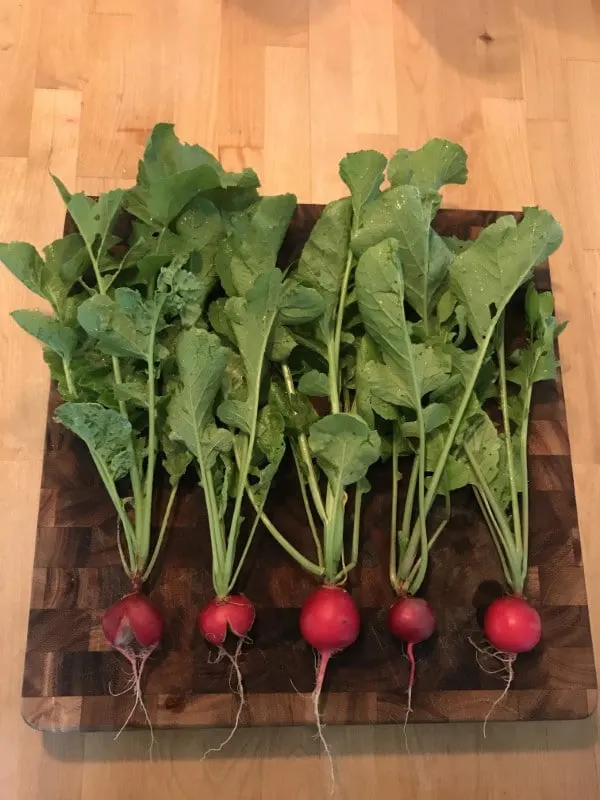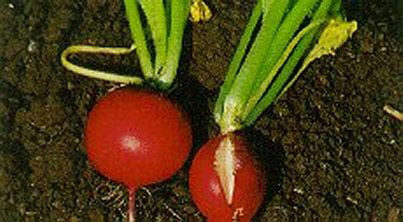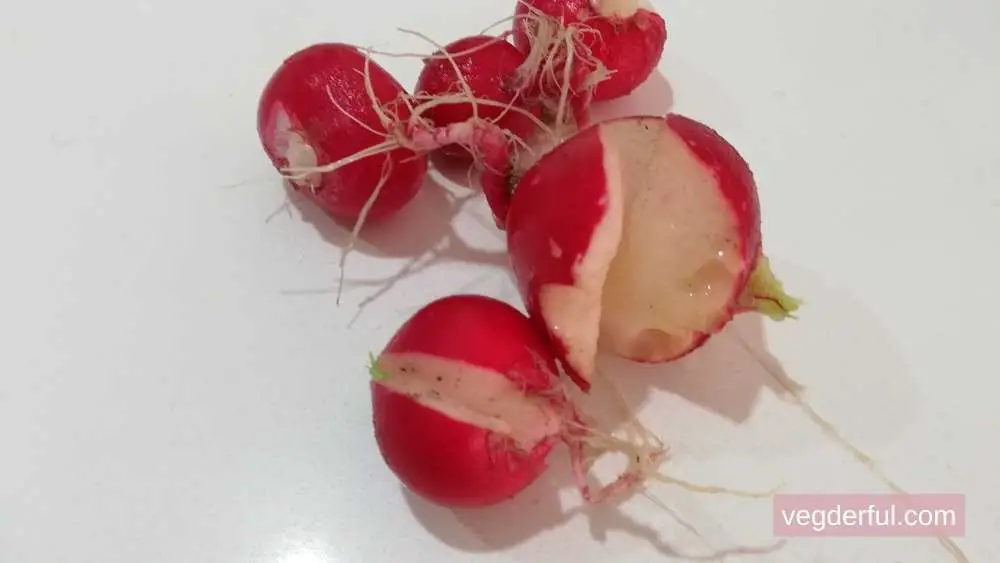So you’ve planted your radishes with care, eagerly awaiting the day you can taste their crisp, peppery goodness. But to your disappointment, you discover that some of your radishes are split straight down the middle. Why is this happening? Well, fear not, because in this article, we’ll uncover the reasons behind this frustrating phenomenon and provide you with valuable insights on how to prevent it from happening again in the future. So let’s dig in and find out why your radishes are splitting!

Environmental factors
Uneven watering
Uneven watering is one of the main factors that can cause radishes to split. If you’re not providing consistent moisture to your radishes, they may grow rapidly and then swell and burst due to fluctuations in water availability. It’s important to ensure that your radishes receive regular, deep watering to avoid this problem. One way to accomplish this is by using a drip irrigation system or watering deeply at the base of the plants.
Excessive rainfall
Excessive rainfall can also lead to radish splitting. When the soil becomes too saturated, the excess water puts pressure on the radishes, causing them to burst. If you live in an area prone to heavy rainfall or experience a particularly wet season, it’s crucial to monitor the soil moisture levels and take steps to prevent waterlogging. Consider using raised beds or adding organic matter to improve drainage and prevent excess water accumulation.
Inconsistent temperatures
Inconsistent temperatures during radish growth can also contribute to splitting. Fluctuations between hot and cool temperatures can cause the radishes to expand and contract rapidly, resulting in unsightly cracks. It’s essential to provide your radishes with a stable growing environment, aiming for a consistent temperature range throughout their growth cycle. Consider using shade cloth or row covers to protect your radishes from extreme temperature swings.
Nutritional factors
Lack of boron
A lack of boron in the soil can lead to radish splitting. Boron is an essential micronutrient for proper cell wall formation and development. When radishes don’t receive adequate boron, their cell walls can become weak and unable to withstand the pressure caused by rapid growth, resulting in splitting. Conduct a soil test to check for boron deficiency and address it by applying boron-rich fertilizers or amendments to promote healthy radish growth.
Over-fertilization
Over-fertilization can have detrimental effects on radishes, including splitting. Applying excessive amounts of nitrogen-rich fertilizers can accelerate growth and cause the radishes to swell and split. It’s important to follow the recommended fertilization guidelines for radishes and avoid overdoing it. Always read and follow the instructions on your fertilizer packaging to ensure proper application rates.

Maturity level
Harvesting too late
Harvesting radishes too late can also contribute to splitting. Radishes are best harvested when they reach their mature size but before they become overripe. If left in the ground for too long, radishes can grow excessively and lose their internal integrity, making them more prone to splitting. Regularly monitor your radishes for signs of maturity and harvest them promptly to prevent this issue.
Poor thinning practices
Poor thinning practices can also lead to radish splitting. Radishes need enough space to grow and develop properly. If they are overcrowded, the root bulbs may not have enough room to expand, causing them to split. Ensure that you thin your radish seedlings according to the spacing guidelines provided on the seed packet or plant label. This allows each radish plant to get the necessary nutrients and space to grow without the risk of splitting.
Root size and shape
Large or misshapen radishes
Large or misshapen radishes are more prone to splitting. When radishes grow too large or develop irregular shapes, their inner structure may not be able to support the outward pressure, leading to splitting. Select radish varieties that are known for their uniformity and try not to let them grow beyond their recommended size. Harvesting radishes at the right size ensures a good balance between root development and avoiding splitting issues.
Competition among radishes
Competition among radishes can also contribute to splitting. If radishes are planted too closely together, they will compete for resources such as nutrients, water, and space. This competition can result in irregular growth patterns and increase the likelihood of splitting. Proper spacing is crucial to prevent this problem. Make sure to follow the recommended spacing guidelines for your specific radish variety to ensure healthy growth and minimize splitting.

Soil conditions
Compacted soil
Compacted soil can be a significant factor in radish splitting. When the soil is compacted, it restricts root development and hampers the radishes’ ability to grow properly. This can lead to irregular growth and an increased risk of splitting. Regularly aerating the soil by loosening it with a garden fork or tiller can help improve its structure and prevent compaction. Additionally, incorporating organic matter into the soil can enhance its texture and promote better drainage, reducing the chances of radish splitting.
Lack of organic matter
A lack of organic matter in the soil can also contribute to radish splitting. Organic matter, such as compost or well-rotted manure, improves soil structure, water retention, and nutrient availability. When the soil lacks organic matter, it becomes less conducive to healthy root growth, making radishes more susceptible to splitting. Prior to planting, amend your soil with organic matter to provide a fertile and well-balanced environment for your radishes.
Pest and disease issues
Insect damage
Insect damage can weaken radish roots and increase the likelihood of splitting. Pests like root maggots, flea beetles, and wireworms can cause physical injury to the radishes, making them more vulnerable to splitting. Implementing proper pest management strategies, such as regular monitoring, applying organic repellents, and using row covers, can help protect your radishes from insect damage and reduce the risk of splitting.
Fungal diseases
Fungal diseases, such as root rot and clubroot, can also contribute to radish splitting. These diseases attack the roots, causing them to become weak and unable to support the growth of the radishes. To prevent fungal diseases, ensure proper soil drainage and avoid overwatering. Additionally, practicing crop rotation and keeping the garden clean and free from plant debris can help minimize the risk of fungal infections and subsequent radish splitting.

Genetic factors
Varietal characteristics
Radish varieties differ in their susceptibility to splitting. Some varieties are genetically predisposed to splitting more than others. When selecting radish varieties, it’s important to choose ones that are known for their resistance to splitting. Research different radish cultivars, read reviews, and seek recommendations from local gardeners and experts to find varieties that are less prone to splitting.
Seed quality
The quality of radish seeds can also play a role in splitting. Using low-quality seeds or seeds that have been stored improperly can result in poor germination and weak plants. Weak plants are more likely to experience splitting issues. Ensure that you purchase high-quality radish seeds from reputable sources and store them in cool, dry conditions to maintain their viability. This will give your radishes a better chance of healthy growth and minimize the risk of splitting.
Growth rate and spacing
Rapid growth
Radishes that experience rapid growth are more susceptible to splitting. Factors such as excessive fertilization or sudden availability of nutrients can lead to accelerated growth, causing the radishes to outpace their own structural development. To avoid this, make sure to follow the recommended fertilization rates and provide consistent nutrients to your plants. Slow and steady growth allows radishes to develop properly and lowers the chances of splitting.
Insufficient spacing
Insufficient spacing between radishes can also contribute to splitting. When radishes are planted too close together, it restricts their access to essential resources, resulting in competition and irregular growth. Proper spacing ensures adequate airflow and provides each radish plant with sufficient room to grow and develop without overcrowding. Refer to the planting instructions for your specific radish variety and follow the recommended spacing guidelines to prevent splitting caused by insufficient space.

Overhead irrigation
Waterlogged soil
Overhead irrigation, such as sprinkler systems, can lead to waterlogged soil conditions. Excessive moisture in the soil can put pressure on the radishes, causing them to split. If using overhead irrigation, be mindful of the amount and frequency of water applied. Consider switching to a drip irrigation system to deliver water directly to the base of the plants, minimizing the risk of waterlogging and radish splitting.
Hydraulic pressure
Overhead irrigation can also create hydraulic pressure that contributes to radish splitting. When water is applied forcefully or in large amounts, it can exert pressure on the radishes, causing them to burst. Adjust your irrigation system to ensure a gentle and even application of water, preventing the creation of excessive hydraulic pressure that could lead to splitting. Maintaining a consistent moisture level without drowning the plants is key to avoiding this issue.
Cultural practices
Improper planting depth
Planting radishes too shallow or too deep can impact their growth and contribute to splitting. If radishes are planted too shallow, they may grow partially above the soil surface and be more prone to splitting due to exposure to air and sunlight. On the other hand, planting radishes too deep can restrict their growth and make it difficult for them to reach maturity, increasing the chances of splitting. Follow the recommended planting depth for your specific radish variety to ensure proper growth and minimize splitting risks.
Overcrowding
Overcrowding is another cultural practice that can lead to radish splitting. Planting radishes too closely together can limit their access to essential resources, resulting in competition and uneven growth. Adequate spacing is crucial to allow each radish plant to develop fully. Follow the recommended spacing guidelines and thin your radishes if necessary, ensuring they have enough space to grow without the risk of splitting.
By being aware of these various factors that can contribute to radish splitting, you can take proactive steps to prevent the issue and grow healthy, intact radishes. From providing consistent watering and proper nutrition to optimizing growing conditions and implementing sound cultural practices, you have the tools to minimize the risk of radish splitting and enjoy a bumper crop of delicious, intact radishes. Happy gardening!



